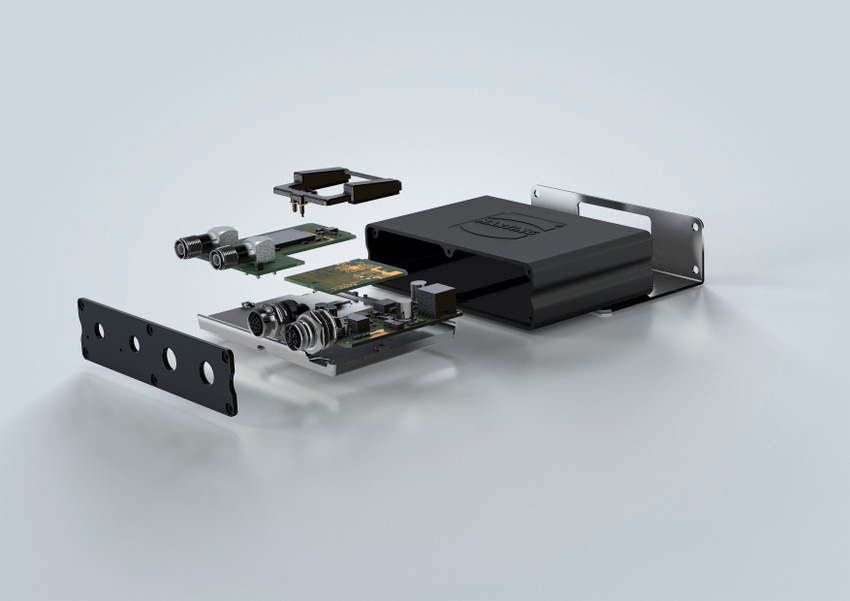Could Smart Connectors Aid the IIoT?
With new smart connectors, Harting makes a case for more edge-based computing on the factory floor.
November 2, 2017

The move toward “edge computing” in the Industrial Internet of Things (IIoT) gained momentum recently, as Harting Technology Group ratcheted up its effort to bring intelligence to electrical connectors.
Harting, which makes electrical cables and connectors, made the case for an industrial future that involves less computing in the cloud, and more computing in and around industrial machinery. “As you envision an Internet of Things with tens of billions of connected devices, you have to ask yourself, is it practical to send all this data to the cloud?” noted Vivek Dave, director of new technology for Harting, at a press conference in the Chicago area.
To provide an adjunct to the cloud, the company’s engineers suggested that intelligence could easily be placed in modular units that already incorporate connections for electrical power and signals. One such solution from Harting, known as MICA, incorporates a 1-GHz ARM processor, 1 GB of RAM, and 4 GB of eMMC flash memory on board a connector module.
|
Harting’s MICA incorporates a 1-GHz ARM processor, 1 GB of RAM, and 4 GB of eMMC flash memory. (Source: Harting) |
“The connectors are already on the machines,” Mark Kojak, vice president of product management for Harting, told Design News. “So what better place to take data than at the machine and at the connector?”
Harting engineers suggested that the technology could be applied to machine tools, manufacturing machinery, RFID readers, smart infrastructure and electric motors in a variety of applications. Smart connectors could help with such applications by retrieving real-time data and doing the analytics on board while the factory floor machines operate.
The company’s MICA and Smart Han products are believed to be the first connectors to offer such capabilities. Their emergence comes at a time when manufacturers are increasingly considering so-called “edge computing” solutions. Edge computing, at least in an industrial setting, refers to the use of localized or machine-based computers to process real-time data, store it, and apply analytics to look for factory floor trends. Such edge-based techniques have gained favor lately, given the growth forecasts for the IIot. Some experts now believe that the quantity of connected devices will reach 30-50 billion by 2020.
During their presentation, Harting engineers argued that edge-based solutions could minimize latencies, allow more decisions to be made in real time, and preserve the proprietary know-how of manufacturers in many factory floor applications. As such, they contend that edge computing could act as a computing alternative, serving as a “front end” system, while the cloud operates as a “back end.”
“We’re by no means implying that cloud computing is going away,” Dave said. “But together, these two solutions can handle this explosion of tens of billions of devices.”
Senior technical editor Chuck Murray has been writing about technology for 33 years. He joined Design News in 1987, and has covered electronics, automation, fluid power, and auto.
Read More Articles on IoT Technology:
Global Sensor Market to Expand by 50% by 2022
Using Customer IoT Data to Improve Products
The Road to a Trillion IoT Devices
|
About the Author(s)
You May Also Like


.jpg?width=300&auto=webp&quality=80&disable=upscale)


